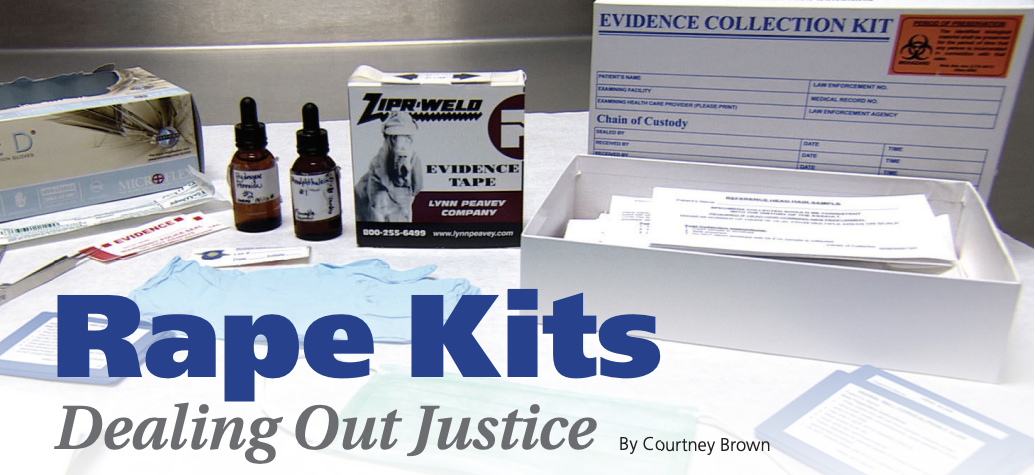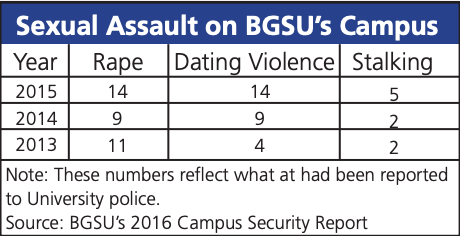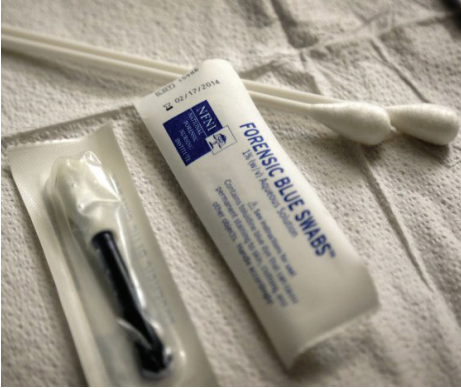
Victims of rape who decide to report the crime to police may decide to consent to a rape kit, which is a collection of evidence for possible future prosecution. “It’s a pretty extensive examination,” University interim police chief Michael Campbell said. “It’s our responsibility to maintain that evidence for an ‘x’ amount of years and submit it to the BCI.” In Bowling Green, the Wood County Hospital conducts rape kits, and nurses then send them back to the corresponding police department.
Ohio had quite the problem with thousands of backlogged rape kits until 2015, when a new state law required police departments to send in all of their old kits. Now, police departments must send rape kits to the Bureau of Criminal Identification and Investigation (BCI) or other certified crime labs within 30 days.
Before police departments were required by law to turn in rape kits in 2015, Attorney General DeWine started the Sexual Assault Kit (SAK) Initiative in 2011 to push for greater kit testing. BCI’s information officer, Jill Del Greco, gave some statistics to show how many rape kits BCI’s DNA scientists have tested, and how many they still have to get to.
From DeWine’s 2011 SAK Initiative, Ohio police departments have sent in 13,931 older rape kits to the BCI. Of those kits, 12,106 have been tested, Del Greco said. As for rape kits outside of the special initiative: 12,215 have been tested. These tested kits led to about 4,396 hits in

“These tested kits led to about 4,396 hits in BCI’s DNA database, which narrows down potential suspects of sexual assault.”
– Del Greco BCI Information Officer

BCI’s DNA database, which narrows down potential suspects of sexual assault, Del Greco said.
• Toledo PD submitted 1,802 kits. 1,744 have been tested.
• Wood County police departments submitted 79 rape kits. 58 have been tested.
• Bowling Green PD submitted 35 kits. 34 have been tested.
• BGSU submitted 11 kits. 11 have been tested.









